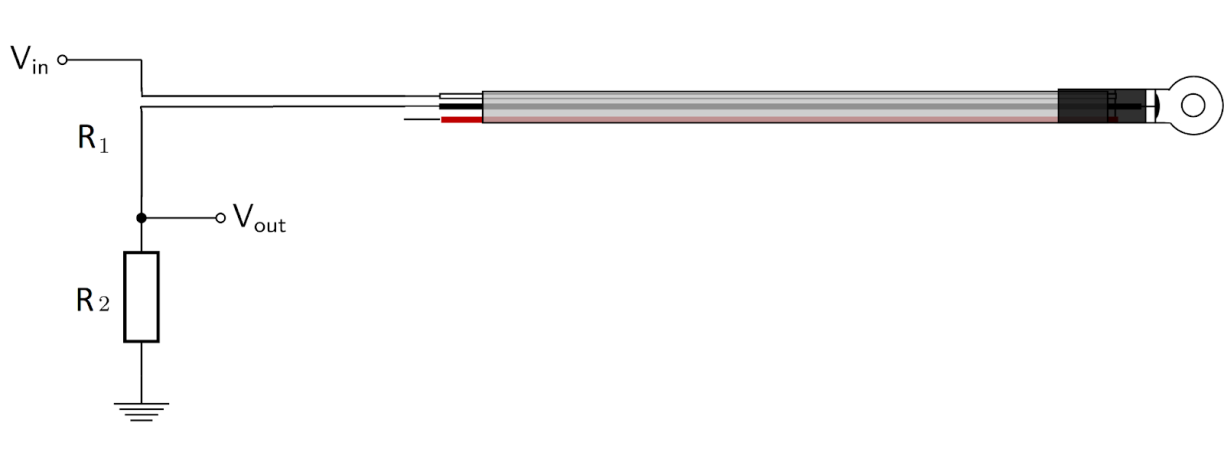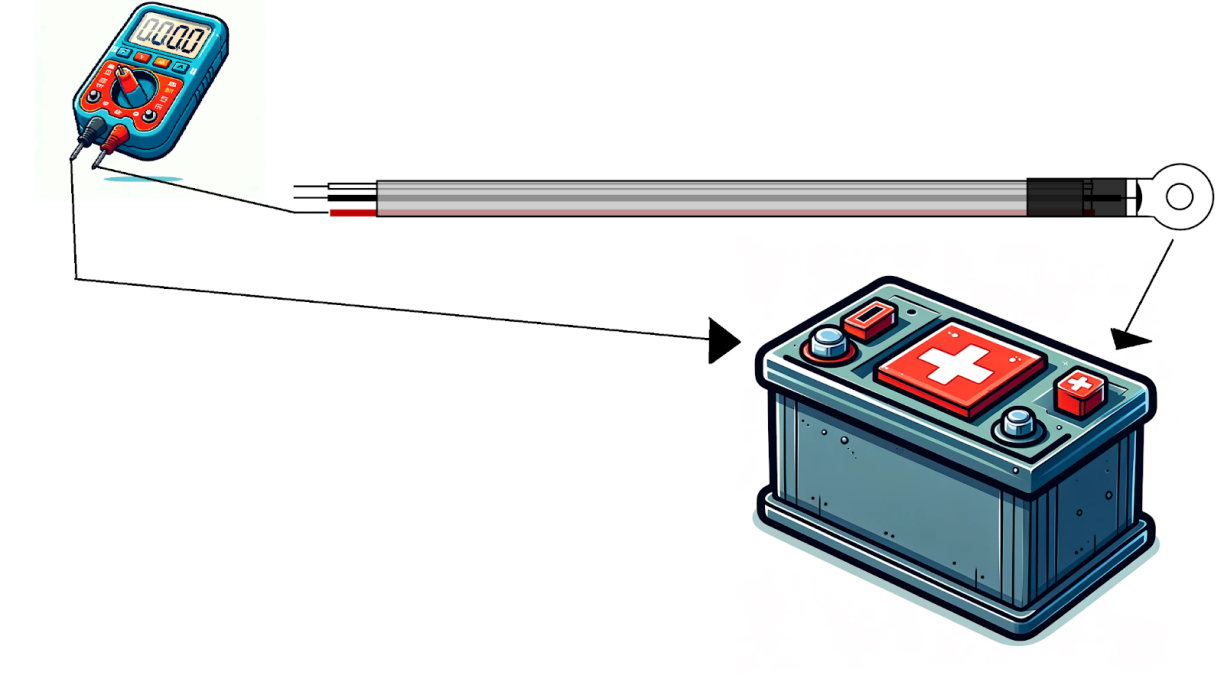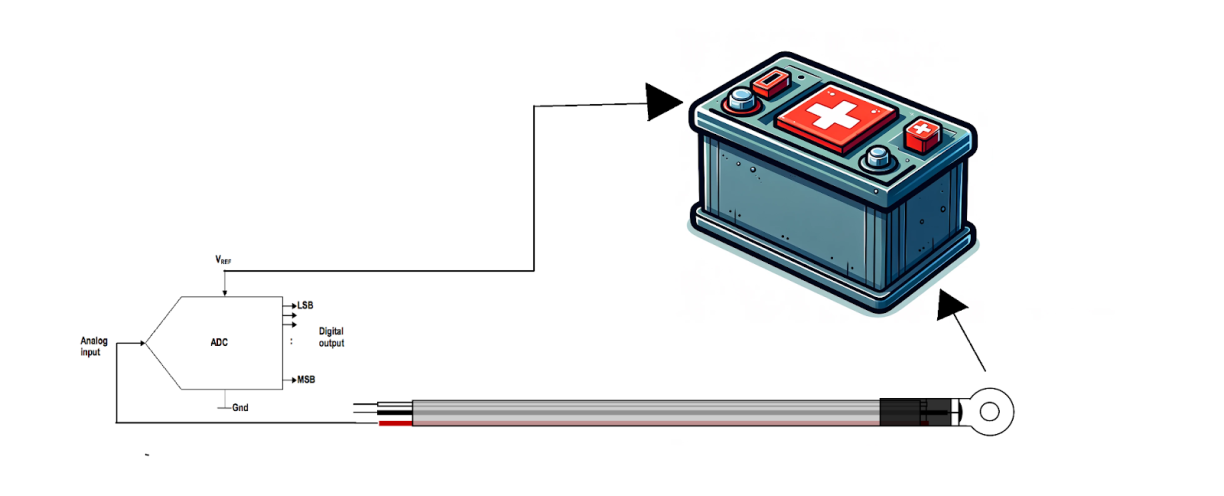Are you looking for a reliable and efficient way to measure temperature accurately? Look no further! Introducing ThermiVolt – the innovative solution that simplifies temperature measurement using NTC thermistors with a ring terminal.
ThermiVolt utilizes a clever design, integrating a traditional NTC thermistor with two wires for resistance measurement and an additional wire connected to a ring lug for voltage measurement.
What is ThermiVolt?
Understand the Basics
Before diving into measurements, it’s crucial to grasp the fundamental principle behind NTC thermistors. These thermistors exhibit a change in resistance with temperature variation. As temperature increases, resistance decreases, and vice versa.
Wiring Configuration
ThermiVolt employs a three-wire configuration. The black and white wire are dedicated to measuring the resistance across the NTC thermistor, while the red wire is connected to the ring lug for voltage measurement.
ThermiVolt with #6 (M3.5) Ring Lug Datasheet can be found here.
ThermiVolt with #8 (M4) Ring Lug Datasheet can be found here.

Importance of Dielectric Strength in ThermiVolt
The dielectric strength rating of 3000 VAC between the ring terminal and the NTC thermistor in ThermiVolt is essential for several reasons:
- Electrical Safety: It ensures that the insulation barrier between the ring terminal and the NTC thermistor can withstand high voltages without breaking down, reducing the risk of electric shock or equipment damage.
- Prevention of Short Circuits: A high dielectric strength prevents electrical arcing or short circuits between the ring terminal and the NTC thermistor, maintaining the integrity and functionality of ThermiVolt.
- Isolation of Components: Dielectrics provide electrical isolation between different components within ThermiVolt, allowing them to operate independently and safely within the same device.
How to Get the Temperature from ThermiVolt
Method 1: Voltage Divider Configuration
How it Works:
In this setup, the NTC thermistor is part of a voltage divider circuit with a fixed resistor. As the resistance of the NTC thermistor changes with temperature, the voltage across it also changes.
Steps:
- Construct a voltage divider circuit with the ThermiVolt and a fixed resistor.
- Measure the voltage across the ThermiVolt.
- Use the known resistance of the fixed resistor and the measured voltage to calculate the resistance of the NTC thermistor.

Vin is your input voltage.
Vout is the reference voltage.
R1 is the resistance of the ThermiVolt
R2 is the resistance of the reference resistor.


Method 2: Wheatstone Bridge Configuration
How it Works:
The Wheatstone bridge is a balanced circuit commonly used for measuring resistance. By adjusting the ratio of resistances in the bridge, temperature-dependent changes in the NTC thermistor’s resistance can be accurately measured.
Steps:
- Construct a Wheatstone bridge circuit with the NTC thermistor and three known resistors.
- Apply a voltage to the bridge circuit.
- Measure the voltage across the bridge.
- Adjust the known resistors until the bridge is balanced (voltage across the bridge is zero).
- Use the ratio of resistances in the bridge to get resistance


Assume R1 = R3. Then,

Rearranging for RT,

The relation between T and RT is given by,

or,

Substituting for RT from Equation 5, we have

If we further assume R1 = R2 = R3 = Rb, we have

Please note T will be in Kelvin
How to go from Resistance to Temperature
Method 1: Lookup Table
Using Resistance from Voltage Divider or Wheatstone Bridge:
- Refer to the lookup table provided by Ametherm, which correlates resistance values to corresponding temperatures.
- Match the measured resistance value with the closest value in the lookup table.
- Obtain the corresponding temperature from the lookup table for precise temperature measurement.
Method 2: Steinhart-Hart Equation
Using Resistance from Voltage Divider or Wheatstone Bridge:

- Obtain the Steinhart-Hart coefficients provided by Ametherm. These coefficients (A, B, and C) are specific to the NTC thermistor model and are used in the Steinhart-Hart equation shown above.
- Where:
- T is the temperature in Kelvin.
- R is the resistance of the NTC thermistor in ohms.
- Plug the measured resistance value into the Steinhart-Hart equation.
- Solve for the temperature (T) using the coefficients (A, B, and C).
- Convert the temperature from Kelvin to Celsius or Fahrenheit as required.
By offering both the lookup table and the Steinhart-Hart equation options, ThermiVolt ensures flexibility and accuracy in temperature measurement, catering to diverse customer preferences and application requirements.
Method 1: Direct Voltage Measurement
- Connect the ThermiVolt ring terminal to the desired point where voltage and temperature needs to be measured.
- Connect the Red wire to the positive terminal of a voltmeter.
- Connect the negative terminal of the voltmeter to a suitable reference point (e.g., ground or common).
- Switch on the voltmeter and read the voltage directly from the display.

Method 2: Analog-to-Digital Converter (ADC)
- Connect the ThermiVolt ring terminal to the desired point where voltage and temperature needs to be measured.
- Connect the ThermiVolt’s red wire to one of the analog input channels of an ADC.
- Connect the ground or common reference of the ADC to a suitable reference point.
- Configure the ADC to convert the analog voltage input to a digital value.
- Read the digital value from the ADC and convert it back to voltage using the ADC’s resolution and scaling factors.

These methods provide flexibility in voltage measurement, allowing customers to choose the most suitable approach based on their specific requirements and equipment availability.
| Part Number | R @ 25°C (kΩ) | Beta (K) | Digi-Key | Mouser |
|---|---|---|---|---|
| TVNR 103395-788 | 10.0 | 3,950 | 570-TVNR103395-788-ND | 995-PANR103395-788 |
| TVNR 103395-789 | 10.0 | 3,950 | 570-TVNR103395-789-ND | 995-PANR103395-789 |
ThermiVolt revolutionizes temperature and voltage measurement with its innovative design and versatile functionality. By combining the capabilities of temperature sensing and voltage measurement into a single probe, ThermiVolt offers simplicity, efficiency, and safety for a wide range of applications. With its high dielectric strength and user-friendly features, ThermiVolt is the ideal choice for professionals seeking reliable and accurate measurements in various environments. Experience the convenience and performance of ThermiVolt today and unlock new possibilities in your measurement tasks.



